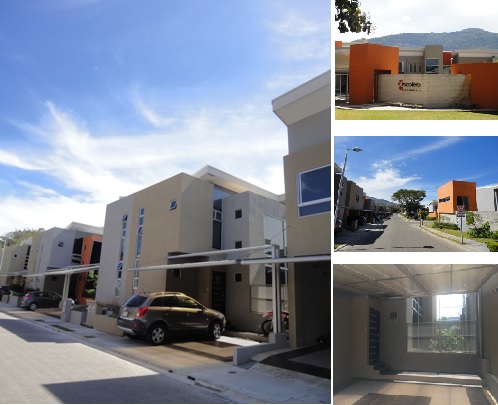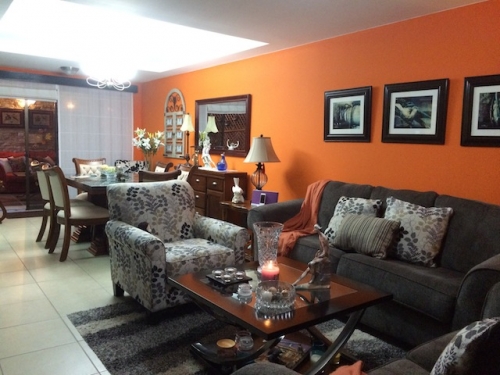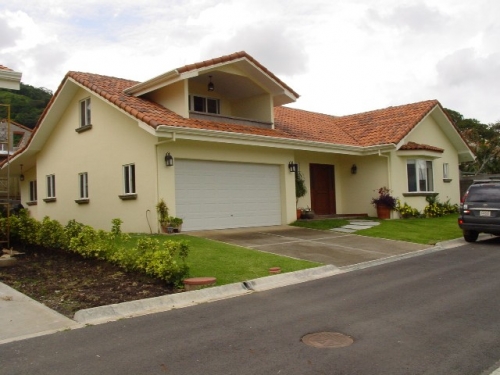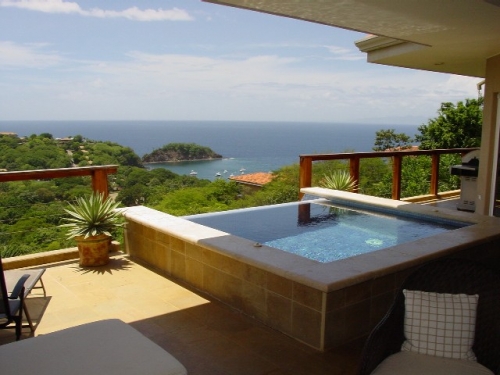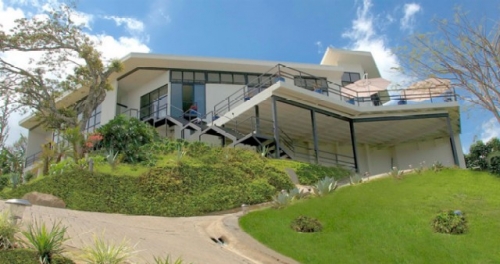Costa Rica Guide
Costa Rica Real Estate
List your property today!
Inclusion of real estate listings at Costa Rica Guide is
absolutely free of charge.
Featured Properties
Costa Rica Guide - Costa Rica Real Estate
In Costa Rica's cattle country: Northwest region resembles Hawaii
John Bordsen
Knight Ridder/Tribune News Service
November 18, 2002
What's it like to live in a far-off place most of us see only on a vacation? Foreign Correspondence is an interview with someone who lives in a spot you may want to visit.
Leslie B. Zelinsky Epling, 57, moved to Playas del Coco, in northwestern Costa Rica in 1974, and has lived there ever since.
Q. Was your part of Central America affected by Hurricane Isidore?
A. It hasn't been raining much, and the rain drains fast. Other areas of Costa Rica have been flooded. Where I am, we get a lot of rain but it's just semi-inconvenient. You can still drive around, and the water doesn't get inside the house.
Playas del Coco is in the driest part of the country and the hurricane winds don't come here. It doesn't rain like it used to 20-some years ago _ due to El Nino, global warming or whatever.
Q. What does northwest Costa Rica look like?
A. I have a niece who is married to a man from South Africa, and they came to visit once. He said it reminded him of what northern South Africa looks like. I'm in the middle of cattle country, and there's a lot of grazing lands in my province, which is called Guanacaste. We also grow rice and sugar cane. You can see landscapes of flatlands with beautiful trees, especially along riverbeds. There are volcanoes in the distance.
Q. What state up here does it resemble?
A. I moved here from Hawaii, and it looks like that _ tropical _ except that we have a dry season and a wet one. And there aren't as many flowers. I'm originally from California, and the Coco area doesn't particularly look like that. Costa Rica is like California in that there are many different climate zones with varying vegetation. I have a pizzeria in the mountains that's between two volcanoes; I sometimes enjoy going from the beach to the cooler climate.
Q. Are you on the beach?
A. No, about 500 meters from there _ about a five- to 10-minute walk. The town consists of a little main street where the bank, market, plaza, bars and restaurants are. I'm in town, but out a bit. I live on 2.3 acres of property.
The Pacific beaches range from white sand to black, depending on whether they have a coral or lava base. Some are very well-protected and good for boat anchorages. We have a lot of sailing visitors. There's also some really good surfing. Take a look at a surf magazine: There's an international surf tournament at Playa Jaco. There's a little surfing camp here where people go on a daily basis. One place is known as Witch's Rock.
Q. What about rain-forest tourism?
A. We're not far from Santa Rosa National Park, which is a tropical dry forest. We're not far from Monteverde, which is a tropical rain forest _ a cloud forest, actually, because it's covered in mist all the time. You'll find bird tours, butterfly farms up where my pizzeria is, nature walks where you'll see incredible plants. And there are tree-canopy tours, where you go tour in a tram, and there's a sky walk _ a series of bridges between platforms.
There's also an adventure kind of tour where you get harnesses and cables and slide from platform to platform. It's exciting but you're less likely to see wildlife.
Q. What's the difference between a tropical dry forest and a rain forest?
A. In a rain forest, it rains all the time and is green all the time. Where I am, we have a six-month dry season when everything turns brown except trees by the river. During the six-month wet season, it doesn't rain all the time but the whole countryside turns green. Makes it look like a whole different place.
Q. What kind of animals do you see out your window?
A. In my yard? Domestic animals _ dogs. My neighbors have horses and cattle. I had a goat recently and have had ducks.
We also have groups of howler monkeys coming through to eat mango trees. I have two mangos that are more than 100 years old. I've got a huge orchard _ hybrid mangoes, sweet oranges, sour oranges, sweet lemons, sour lemons, sweet and sour tangerines, grapefruits, guavas, tamarinds, avocados, cashew fruit _ I don't process the nut but I eat the fruit _ and several species of bananas.
We also see parakeets _ they're not budgies, though. They're called orange-fronted parakeets and look like little parrots. There are incredible white-fronted magpie jays, a kind of blue jay with a crest on them. They're very big, and have a white breast, black collar and blue feathers. The motmot is a turquoise-colored bird with a very strange tail _ just a naked feather with a little triangle of feathers on the bottom.
And there are anteaters. They probably live in the mango trees because the dogs bark at them. Besides ants, they eat termites _ there are a lot of termites here.
(c) 2002, The Charlotte Observer (Charlotte, N.C.).
Note: The above information is not to be used for any other purpose other than private study, research, criticism or review. Thank you.

